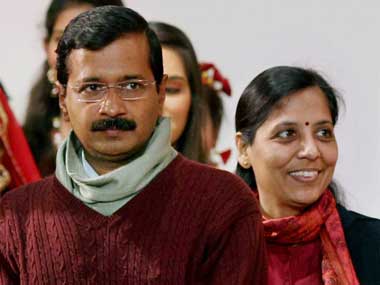For the Aam Aadmi Party, its initial spectacular foray into politics may prove to be easier than a longer-term, sustainable prosperity at the hustings. AAP’s USP, circa January 2014, is that it isn’t an established political party. It is riding high against a cross-party establishment that has grown corrupt, disconnected and complacent. However, at some point—in the not so distant future—the insurgent party is going to have to lay out a philosophy, a plan of action that goes beyond bashing the establishment. In Delhi, in fact, AAP is already the establishment. Being in government is the real challenge and a tough one. The party’s intellectual stalwart Yogendra Yadav has said on more than one occasion that AAP hopes to transcend what he calls the 20th century classifications of Left and Right in government. Prima facie AAP has already done that. It means all things to all people, at least in Delhi. The poor see in it a left-of-centre collectivist/welfarist party. The minorities see in it a secular political force.[caption id=“attachment_1332205” align=“alignleft” width=“380”]  AAP convener and Delhi Chief Minister Arvind Kejriwal. PTI[/caption] Those who lean to the right see great virtue in its invocation of traditional right-wing symbolism like the battle cries of “Bharat Mata Ki Jai” and “Vande Mataram”. The individualist (right leaning) middle class sees in AAP’s emergent the weight given to merit over lineage and feudal loyalties. The comparison may seem like a stretch but AAP is very much like the “Big Tent” the Indian National Congress was in 1947. The Congress attracted all kinds of supporters: the poor, the nascent middle class, farmers, even businessmen. Its leadership was an eclectic mix of those who leaned left and those who bent right. Everyone was united against a common enemy: the British Colonial government. AAP too has the entire rainbow under its umbrella, united against an ‘evil’ political establishment. It did not take long for the Congress to discover that while it was easy to mean all things to all people while it was a movement in opposition, it was considerably harder once in government. The Congress tried a middle non-aligned, mixed path. But slowly, but surely, the conflicted Congress—unable to satisfy all interests and constituencies at the same time—took its call and chose to turn left under the leadership of Nehru and Indira Gandhi. The rest is history. AAP’s base instincts seem to turn left when in government. Its populist policies on water and power in Delhi are ample indicator of which way the party leans. Significantly, like the Congress under Nehru, there is a conviction that the government is superior to market forces provided it is manned by good honest people. AAP should read its history books. Neither the Congress nor the government of India was corrupt in the initial years after independence. Yet, its insistence on state-led development led India to stagnation. It also opened the door for a later incarnation of the Congress (in the Indira Gandhi era) to exploit that statist system for corruption. I have no doubt that the current leadership of AAP consists of good, decent, honest men and women. But any system that depends on the goodness of individuals rather than the robustness of checks and balances and proper incentives cannot deliver prosperity to India. In India, the state has simply not delivered whether manned by good people or by bad people. That is why the AAP needs to be more welcoming of free markets than it is. But that would mean sacrificing its core as a collective movement, set up for the greater public purpose, and moving to a more individual-centric approach to policy. Can AAP truly transcend the old divides of Left and Right? Perhaps. But the fact is that the seeds of AAP’s limitations, like those of the Congress, are sown in the fact that no party can mean all things to all people for any length of time. Like Congress in the 1950s and 1960s, AAP will more likely turn left than right – it’s in the very nature of the populist mass movement that gave birth to it (moving Right rather than Left would also pose problems). Once it does, it will find that the general euphoria that has greeted its arrival will start to dissipate, quite quickly as one set of people find themselves seriously disillusioned. There are no giant umbrellas in the tough business of government.
The seeds of AAP’s limitations, like those of the Congress, are sown in the fact that no party can mean all things to all people for any length of time.
Advertisement
End of Article


)
)
)
)
)
)
)
)
)



